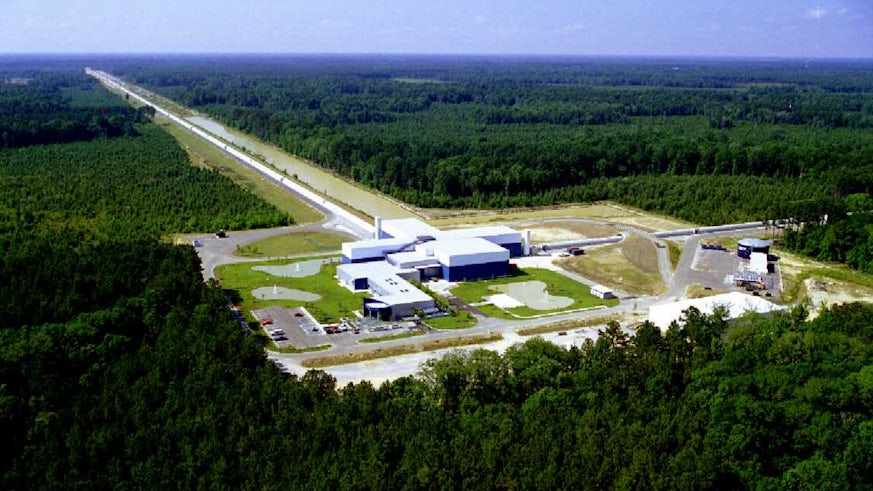Cardiff researchers join the hunt for “elusive” gravitational waves
19 May 2015

An international project involving University researchers, set-up to find the first direct evidence of the existence of gravitational waves, will be officially inaugurated at a ceremony in the US today [19 May 2015].
Researchers at the University's School of Physics and Astronomy will use a powerful supercomputer to comb through data from two gravitational wave detectors that have undergone a major upgrade as part of the Advanced LIGO (Laser Interferometer Gravitational Wave Observatory) Project.
The instruments are now being brought online and will search, with unprecedented accuracy, for the first ever direct evidence of the existence of gravitational waves later this year.
First predicted by Albert Einstein in 1916, gravitational waves are tiny ripples in space-time that are emitted as a result of violent cosmic events, such as exploding stars and merging black holes.
It is believed the detection of these waves will usher in a new era of astronomy, allowing researchers to examine the last minutes of the lives of black holes, as well as provide a snapshot of the Universe just a fraction of a second after the Big Bang.
Researchers at the University's School of Physics and Astronomy have used large-scale, state-of-the-art computer simulations of black-hole collisions to produce theoretical models of gravitational waves.
Professor B S Sathyaprakash, from the University's School of Physics and Astronomy, said: "Advanced LIGO will open a new window for us to observe violent processes in the Universe, such as black holes colliding at near the speed of light. At Cardiff University we hope to use these observations to understand the nature of space-time and matter under extreme conditions, and to test Einstein's theory of gravity when gravitational fields become super strong."
Dr Stephen Fairhurst, who is also at the School of Physics and Astronomy, said: "The operation of Advanced LIGO will herald the beginning of gravitational wave astronomy. We will make use of the Cardiff University supercomputer to search through the detector data to identify the tell-tale signs of a gravitational wave signal."
The Advanced LIGO project consists of interferometric gravitational wave detectors at two sites, one in Hanford (Washington State, USA) and one in Livingston (Louisiana, USA).
The upgrade to the instruments will increase their sensitivity by a factor of 10 and provide a 1,000-fold increase in the number of astrophysical candidates for gravitational wave signals. They will start taking data in the autumn of 2015.
Caltech's David H. Reitze, executive director of the LIGO project, said: "We've spent the past seven years putting together the most sensitive gravitational-wave detector ever built. Commissioning the detectors has gone extremely well thus far, and we are looking forward to our first science run with Advanced LIGO beginning later in 2015. This is a very exciting time for the field."
France Córdova, director of the National Science Foundation, the main funders of the LIGO project, said: "Advanced LIGO represents a critically important step forward in our continuing effort to understand the extraordinary mysteries of our universe. It gives scientists a highly sophisticated instrument for detecting gravitational waves, which we believe carry with them information about their dynamic origins and about the nature of gravity that cannot be obtained by conventional astronomical tools."